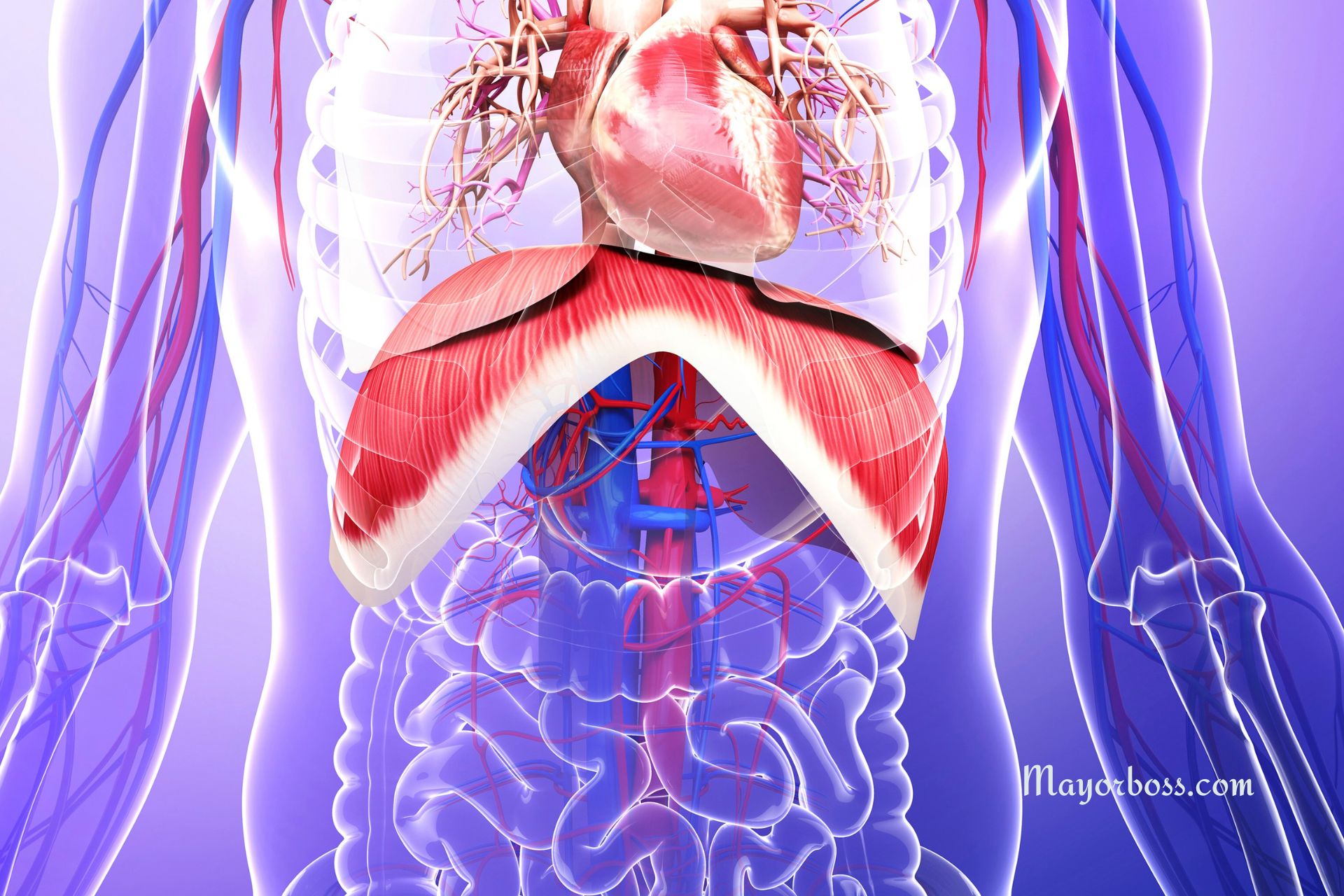What is the Diaphragm?
The diaphragm stands as a pivotal muscle in the human body, crucial not only for the process of breathing but also serving an essential role in the overall function of our respiratory and circulatory systems. This dome-shaped muscle acts as a natural barrier and motor, powering the lungs and influencing the heart’s operations. In this comprehensive guide, we’ll delve into the anatomy, function, and importance of the diaphragm, demystifying its role and highlighting its significance in maintaining our health and well-being.

Anatomy of the Diaphragm
The diaphragm is a large, flat muscle located at the base of your chest cavity, separating the thoracic (chest) cavity from your abdominal cavity. Its unique position and structure enable it to play a key role in the respiratory process.
- Structure: The diaphragm is composed of a central tendon and muscular fibers that radiate outwards like the spokes of a wheel. This structure is anchored to the lower ribs, the spine, and the sternum, allowing it to move downward and upward as it contracts and relaxes.
- Attachments: Its peripheral parts attach to the xiphoid process (a small cartilage projection from the bottom of the sternum), the lower six ribs, and their cartilages, and it extends into the lumbar vertebrae through two crura (fibrous bands).
Function of the Diaphragm
The primary function of the diaphragm is respiration. During inhalation, the diaphragm contracts and flattens, creating a vacuum that allows air to be sucked into the lungs. During exhalation, the diaphragm relaxes and moves upward, helping to expel air from the lungs.
- Inhalation: As the diaphragm contracts, the thoracic cavity’s volume increases, decreasing the pressure inside the chest, allowing air to flow into the lungs.
- Exhalation: Upon relaxation, the diaphragm recoils to its dome shape, reducing the thoracic cavity’s volume and increasing the pressure, which expels air from the lungs.
Besides its respiratory functions, the diaphragm also assists in:
- Enhancing Venous Return: The up-and-down movement helps pump blood back to the heart, aiding venous return.
- Maintaining Pressure Relationships: It plays a role in maintaining appropriate pressure differentials between the thoracic and abdominal cavities, essential for the proper function of internal organs.
- Facilitating Digestive Processes: Movements of the diaphragm also massage the abdominal organs, aiding in digestion and the movement of food through the gastrointestinal tract.
Importance of the Diaphragm
The diaphragm’s role extends beyond mere breathing; it is vital for overall health and well-being. Its efficiency and strength can affect posture, core stability, and even the health of the spine. Disorders of the diaphragm, such as diaphragmatic hernia or paralysis, can lead to significant health issues, including difficulties in breathing, reduced oxygenation of the blood, and compromised physical performance.
Enhancing Diaphragmatic Function
Improving the strength and flexibility of the diaphragm can lead to better breathing patterns, enhanced athletic performance, and improved core stability. Practices such as diaphragmatic breathing exercises, yoga, and pilates are known to strengthen the diaphragm, promote efficient breathing, and improve overall physical health.
Frequently Asked Questions
Q1: Can you strengthen your diaphragm?
Yes, through specific exercises like diaphragmatic breathing, singing, swimming, or playing wind instruments, you can strengthen your diaphragm, improve your breathing, and enhance your lung capacity.
Q2: How do you know if your diaphragm is not working properly?
Symptoms of a malfunctioning diaphragm include shortness of breath, difficulty breathing deeply, unexplained fatigue, and reduced endurance during physical activities.
Q3: Can the diaphragm affect your heart?
Yes, the diaphragm’s movement during breathing affects the pressure within the chest cavity, influencing venous return to the heart and potentially impacting heart rate and blood pressure.
Summary
The diaphragm is a critical muscle in the human body, essential for the process of breathing and playing a significant role in the functioning of the respiratory and circulatory systems. Understanding its anatomy, function, and the importance of maintaining its health through proper exercises can lead to improved respiratory efficiency, enhanced physical performance, and overall well-being. Strengthening the diaphragm not only benefits our breathing but also supports core stability, posture, and the health of our internal organs, underscoring the interconnected nature of our bodily systems. Ensuring the health and functionality of the diaphragm is, therefore, vital for maintaining an optimal quality of life.
